The River Jordan, which forms the eastern boundary of the Land of Israel, is one of the most famous biblical bodies of water. It is mentioned hundreds of times in the Bible. Joshua split its waters to allow the Israelites passage into the Land, Elijah ascended up to heaven from its waters, and of course, Jesus was baptized in its waters by John. What makes this river so sacred? The answer lies in the original Hebrew meaning of its name.
The name of the Jordan in the original Hebrew of the Bible is yarden (ירדן). This comes from the Semitic root Y-R-D (ירד), which means “to descend”. This is a reference to the steeply descending course of this river as it flows southwards. It drops in elevation from 500 meters (= 1600 ft) above sea level to 300 meters (=1000 ft) below sea level. Let’s briefly review the course of this biblically crucial river. As you read through his post, it will help you to periodically scroll back up in order to refer to this map (which shows the Jordan in the center in blue).
The waters of the Jordan River originate in the mountainous Golan Heights, where natural springs and melting winter snow create four important head-streams: Hermon, Sion, Dan and Senir (from east to west). These are their Hebrew names, but commonly the first and last rivers are known by their Arabic names: Baniyas and Hatsbani. Pictured here is a waterfall of the Hermon stream within Baniyas National Park. This is also the location of the city of Caesarea-Philippi, mentioned in the Synoptic Gospels as the site where Peter proclaims Jesus to be the messiah (Mark 8:27-30; Matt. 16:13-20; Luke 9:18-21).
A bit further south, on the grounds of Kibbutz Sede Nehemiah the two main tributaries (Hermon and Senir) join together to formally begin the Jordan River. Pictured here is the meeting point.
The Jordan then meanders through the massive tectonic Rift Valley, passing through the Hula Swamp, and entering the Sea of Galilee near the ancient fishing village of Bethsaida, where Jesus was active as a teacher. It was the hometown of some of the most prominent disciples of Jesus: Peter, Andrew, Philip, but was eventually condemned by Jesus for lack of faith (Matthew 11:20-22). In this photograph you can see the ruins of Roman-era Bethsaida and in the distance, the Sea of Galilee (in Hebrew: Kinneret כנרת)
Originally, the Jordan not only entered the Sea of Galilee from its northern end, but also exited the Sea from its southern end. However, in 1964 the State of Israel built a dam near Kibbutz Degania to prevent the water of the Sea from flowing out into the Jordan River Valley. This major engineering project was undertaken in order to allow for the transportation of as much freshwater as possible to the major urban population centers on the Mediterranean Coast by means of a massive tunnel called the National Water Carrier. Pictured below is the Degania Dam (in the background). A small amount of water is released into the Jordan’s former riverbed to create a site known as Yardenit (“little Jordan”), pictured in the foreground. This is a very successful venture where Christian pilgrims come to be baptized in a sort of pseudo-Jordan River. The site is clean, attractive and certainly provides a tranquil setting for religious contemplation, but as a student of historical geography I have many difficulties accepting the legitimacy of Yardenit. This is quite far from where John the Baptist was active and baptized Jesus. Why fly across the world all the way to Israel only to be baptized in a pseudo-Jordan River? It feels a bit too fake for me.
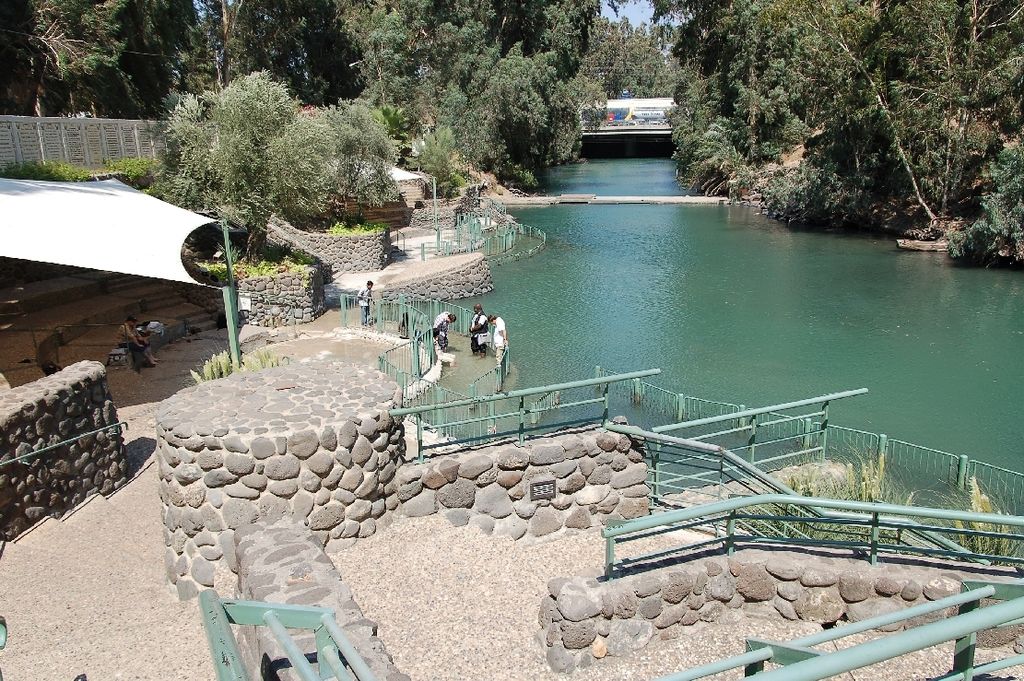 The Degania Dam and the National Water Carrier may have been a good idea 50 years ago, but they are hardly necessary today. For the past decade Israel has effectively solved its water shortage by desalinating Mediterranean Sea water. Meanwhile, the dam stays closed (except in very rainy winters) and has severely damaged the ecosystem of the Jordan River Valley. For the past half-century, south of the Sea of Galilee, the Jordan River has been fed mostly by two large rivers that flow west from the Transjordanian Plataeu: the Yarmoukh and Jabbok (see map above). Here is a picture of an Ottoman-era railroad bridge that allowed for passage over the Yarmouk’s deep canyon. It was destroyed by the Haganah paramilitary forces as part of the infamous “Night of the Bridges” operation in June 1946.
The Degania Dam and the National Water Carrier may have been a good idea 50 years ago, but they are hardly necessary today. For the past decade Israel has effectively solved its water shortage by desalinating Mediterranean Sea water. Meanwhile, the dam stays closed (except in very rainy winters) and has severely damaged the ecosystem of the Jordan River Valley. For the past half-century, south of the Sea of Galilee, the Jordan River has been fed mostly by two large rivers that flow west from the Transjordanian Plataeu: the Yarmoukh and Jabbok (see map above). Here is a picture of an Ottoman-era railroad bridge that allowed for passage over the Yarmouk’s deep canyon. It was destroyed by the Haganah paramilitary forces as part of the infamous “Night of the Bridges” operation in June 1946.
From this point on, the Jordan gets windier, narrower and, sadly, dirtier as sewage from neighboring villages flows into it.
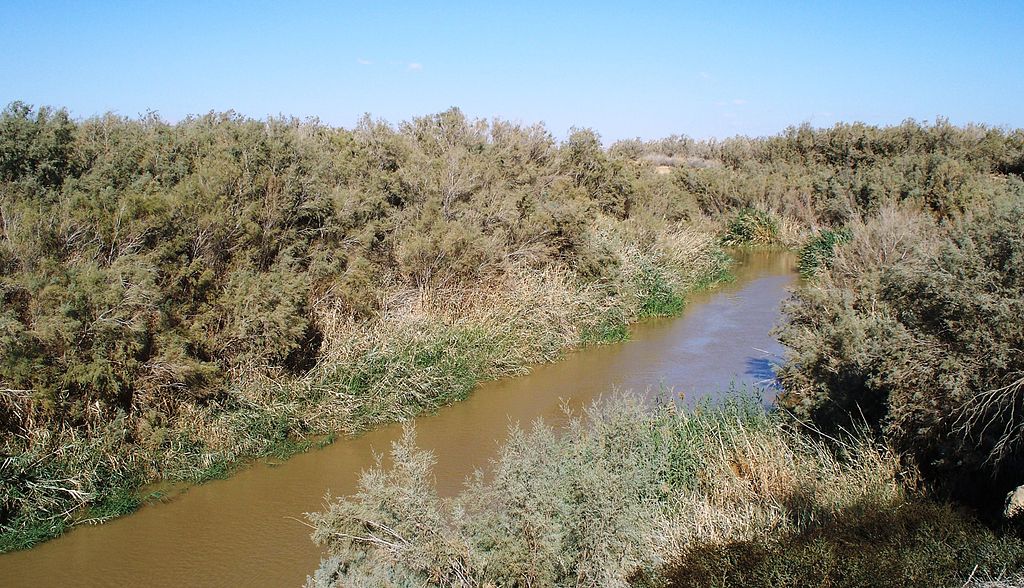 Near the important ancient city of Jericho, the famous ford over the Jordan known as Qasr-al-Yehud (“Fortress of the Jews”) is still visited by many pilgrims. This is a much more legitimate candidate for the ministry of John the Baptist.
Near the important ancient city of Jericho, the famous ford over the Jordan known as Qasr-al-Yehud (“Fortress of the Jews”) is still visited by many pilgrims. This is a much more legitimate candidate for the ministry of John the Baptist.
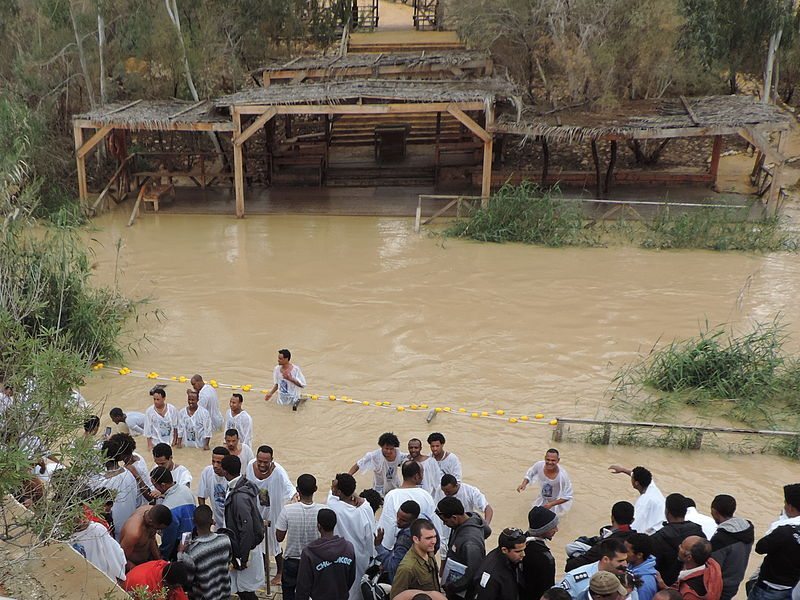 From this point, the not-so mighty Jordan continues to flow a few more miles south, terminating at the lowest point on earth: the Dead Sea. Unfortunatly, as a result of the reduced flow of the Jordan River caused by the Degania Dam, the Dead Sea is suffering as well. As you can see in the image below, over the last 50 years the shore of the Dead Sea has receded almost a mile from its original shoreline. The surface level of the water drops approximately 1 meter every year.
From this point, the not-so mighty Jordan continues to flow a few more miles south, terminating at the lowest point on earth: the Dead Sea. Unfortunatly, as a result of the reduced flow of the Jordan River caused by the Degania Dam, the Dead Sea is suffering as well. As you can see in the image below, over the last 50 years the shore of the Dead Sea has receded almost a mile from its original shoreline. The surface level of the water drops approximately 1 meter every year.
So we have seen that the Jordan River indeed “descends” very dramatically from the Golan Heights to the Dead Sea. But in addition to this physical meaning, there is a deeper metaphysical meaning. All the famous biblical stories situated at the Jordan River have involved a deep spiritual descent, which prepares the way for triumph. For example, before Jesus can begin his ministry announcing the Good News, he must go down to the River Jordan, lowering himself physically as well as spiritually in order to receive the gift of holy spirit. The words of the famous African-American spiritual “Roll, Jordan, Roll” which is featured in the film 12 Years a Slave preserve this sense of descending very clearly:
Went down to the river Jordan
Where John baptised three
When I walked the devil in hell
Said “John ain’t baptized me”
I said roll, Jordan, roll
Roll, Jordan, roll
My soul ought to rise in heaven, Lord
For the year when Jordan rolls
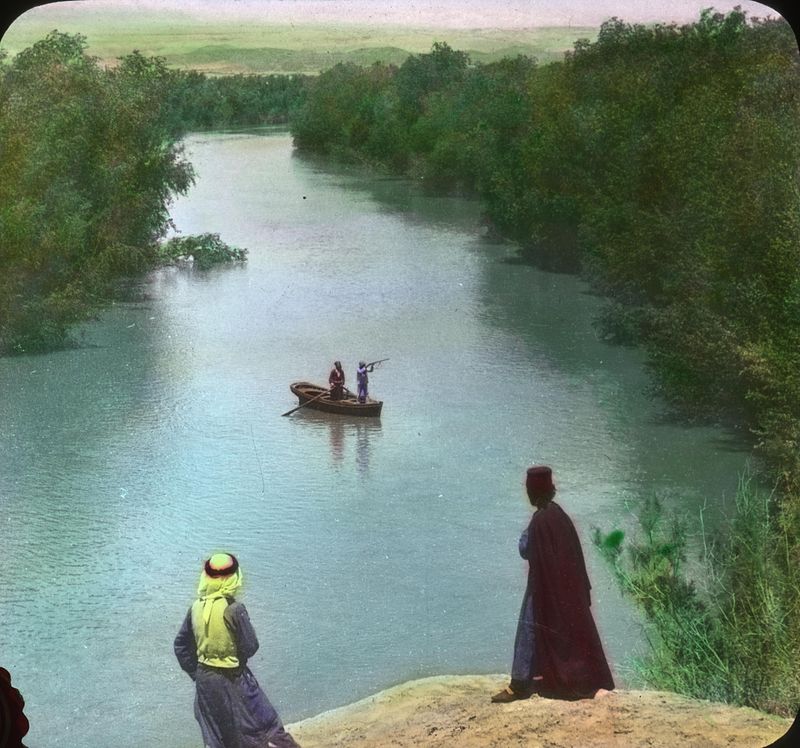
The mighty Jordan River in the early 20th c., half a century before human activity decimated its natural flow.



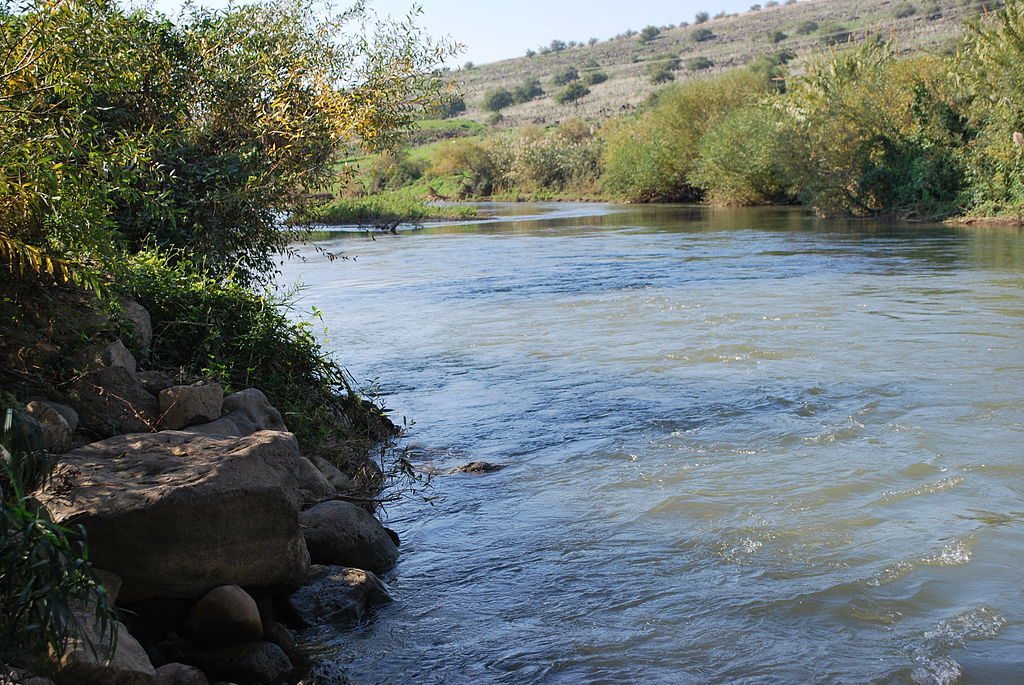
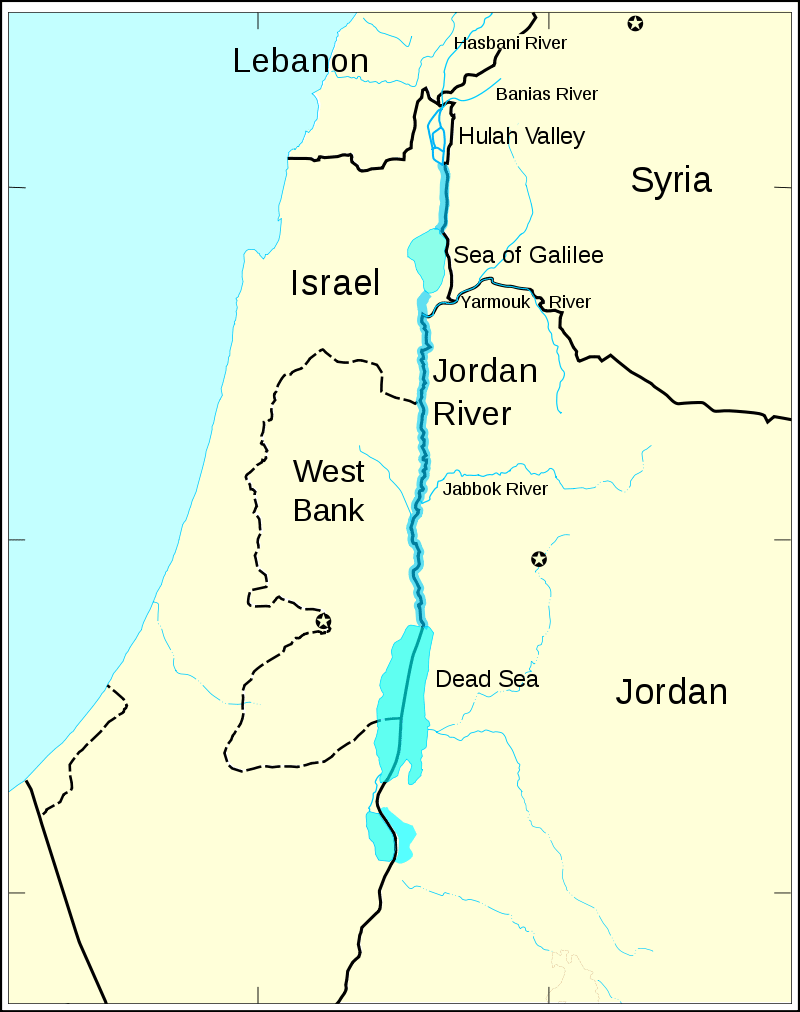

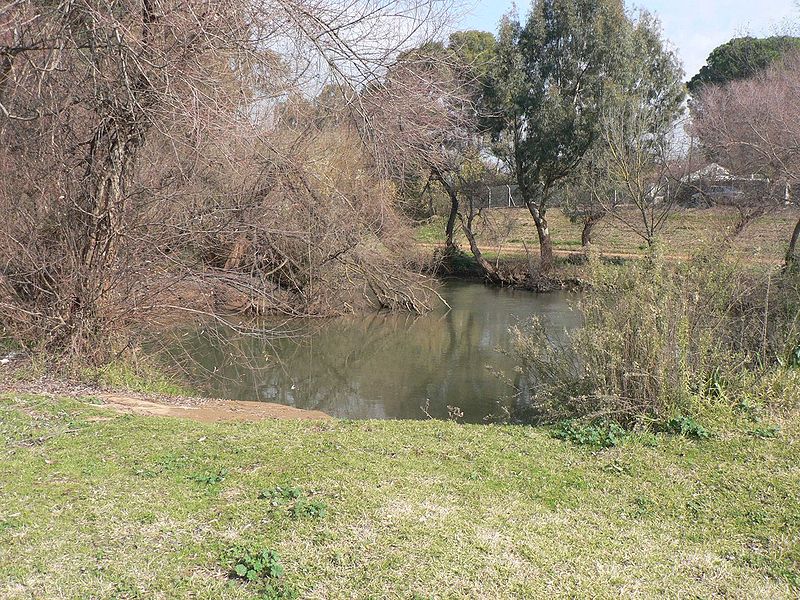

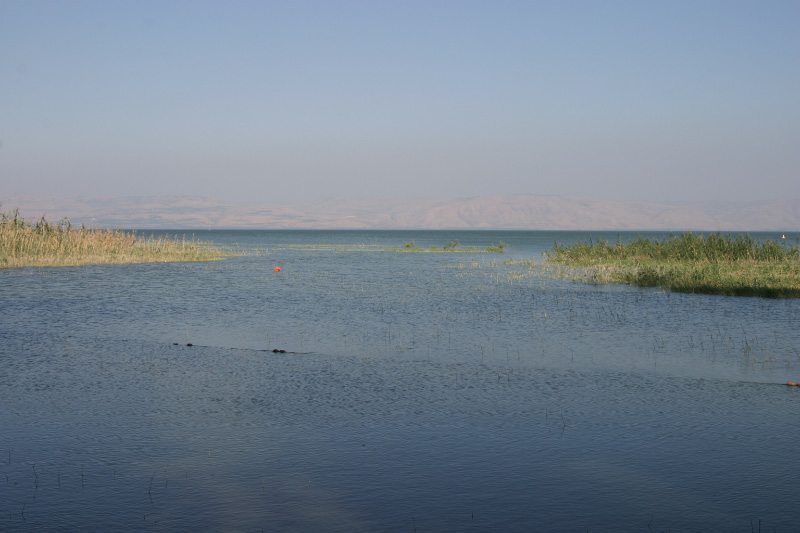
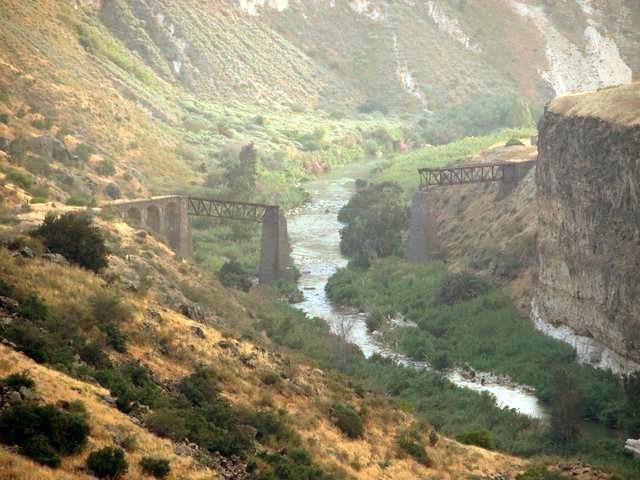
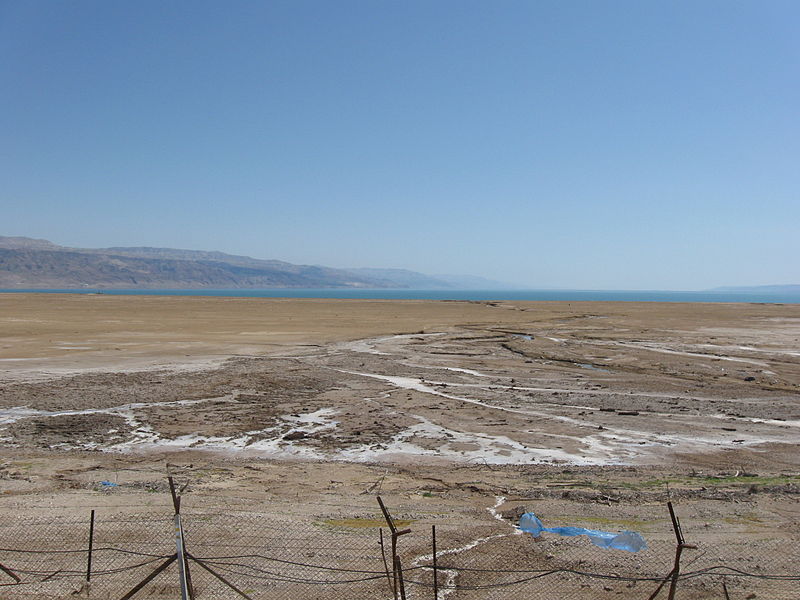



Love your blogs….thank you !! BTW: I was immersed at Yarden in the 1980’s. True that it is not the actual site of John’s immersing, however, I do believe most Christians understand this is symbolic….there is no way of knowing for certain the biblical location of Jesus baptism. True, most likely it was quite a bit further south as John probably ministered near the Qumran community. I would not want to enter the southern section of the Yarden at this time because of what you explain as run off and sewage from neighboring villages. Blessings !! : – )
.”A very fascinating history about the Jordan River. Beautiful pictures, showing features of this important river in the Christian Faith. This brief history has clarified which important sites to visit when planning a trip to the holy land. Thank you